Supta Vajrasana strengthen the abdomen portion..vital for improving digestive system and rejuvenates stamina, has over fourteen versions to tone up the body. practiced with the combination of ‘Pavan Muktasana’. suffering from..slipped disc, vertigo..should not perform the pose.
Introduction
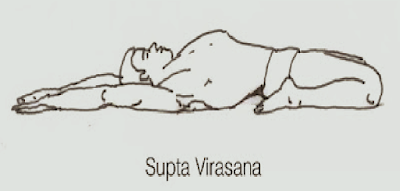 Supta Vajrasana or Supta Virasana is one of the asanas
that would strengthen the abdomen portion of the body. The word supt Vajrasana
is derived from the Sanskrit word ‘Supt or Supta’ means ‘reclined or lying’
while ‘Vajra’ means ‘thunderbolt’ and ‘asana’ means ‘posture’ and also
sometimes referred as Prone Impregnable Pose. The asana, vital for improving
digestive system and rejuvenates stamina, has over fourteen versions to tone up
the body.
Supta Vajrasana or Supta Virasana is one of the asanas
that would strengthen the abdomen portion of the body. The word supt Vajrasana
is derived from the Sanskrit word ‘Supt or Supta’ means ‘reclined or lying’
while ‘Vajra’ means ‘thunderbolt’ and ‘asana’ means ‘posture’ and also
sometimes referred as Prone Impregnable Pose. The asana, vital for improving
digestive system and rejuvenates stamina, has over fourteen versions to tone up
the body.
Supta
Vajrasana is an advance version of Vajrasana where the upper body lies backwards, so that
the back rests on the floor and the arms would rest on the floor with the palms
facing upwards to either sides of the trunk. The people with less flexibility
could face some difficulties while conducting the pose but after sometime it
would be fine as with the continuity of the yoga pose the person would be
acquainted with it. The pose is also known as ‘Supta Virasana’ means ‘lying or Reclined
Hero Pose‘ or ‘Diamond
Pose’ and has few variations like Eka Pada Supta Vajrasana means One-Legged Reclining Fixed Firm Pose or Ardha Supta Vajrasana means
Half Reclined Fixed Firm Pose, which involve one leg folded under the body
while the opposite leg is being stretched out.
The pose can also be practiced with the
combination of ‘Pavan
Muktasana’ which supports
the amelioration of the complete digestive system of human being. The asana can
be performed before lunch or dinner by increasing meditation concentration and
improving breathing.
Through
the asana abdominal organs get massaged, increases flexibility, tones the
spinal nerves by stimulating the essential glands and also tones the pelvic
muscles and the sciatic nerves, rib cage is stretched and expanded, increases
the circulation in the brain, and stretches back muscles by separating the
individual vertebrae from each other.
- First and foremost step to perform yoga is to calm down yourself and relax by taking deep breathes.
- Sit in Vajrasana, that is, kneel on the floor with the knees together and sit back on the inner edges of the upturned feet. The toes may be kept together (or apart), but the heels should be spread apart to support the outer edges of the buttocks. Breathe freely and deeply while placing the right palm on the right knee and the left palm on the left knee with the head and back erect. As shown in the picture.
- Slowly push yourself backward by holding both the ankles with each hand for the support to bend and place slowly each elbow on the floor to rest one by one.
- With the support of the resting elbows, bring down the head smoothly, to place the head on the floor by arching the back, and then stretch the hands to place them on the thighs (placing of hands can vary as per the convenience, some keep palms on the stomach by resting the elbows on the floor or stretching beyond the head by resting them on the floors while some lock their hands by folding them to make a cushion like to place them beneath the head).
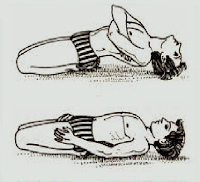
- Back along with the shoulder must be in contact with the floor same goes to the lower legs and the knees must be together in contact with the floor. Initially it would seem impossible, to the rescue you can go easy with the pose and perform the yoga to the extent of your convenience but slowly and steadily after practicing for some days you will be able to place your each body parts on the ground with the contact as required for the pose. While performing the pose relax and comfort yourself so that you don’t over strain your muscles and the ligaments of the legs
- Relaxing is the main motto of the pose, so relax and close your eyes along with slow and deep breathes by holding onto the pose. Initially hold the position till you are comfortable but later on try to maintain the pose for about one to two minutes with normal breathing process.
- Finally gently return to the starting position of Vajrasana by reversing the whole process step by step.
- In the initial days repeat the process for three to five times as the pose gets acquainted increase the number to eight to ten times.
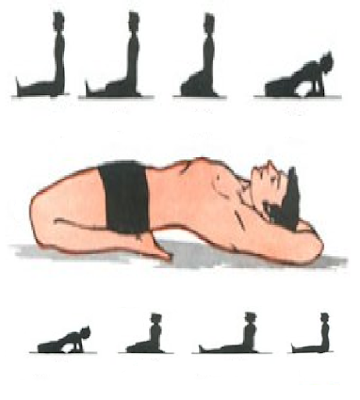 |
| Steps of Supta Vajrasana |
Buy the book - Light on Yoga: The Classic Guide to Yoga by the World's Foremost Authority .
.
Benefits of Reclined Thunderbolt Pose (Supta Vajrasana)
Benefits of Reclined Thunderbolt Pose (Supta Vajrasana)
- The whole body gets toned right from the head through the spinal nerves to the pelvis. This pose makes the rear versatile and realigns shoulders.
- The nerves within the neck, thyroid, thymus and parathyroid glands are stimulated and also regulate the functioning of adrenal glands.
- The stretches due to the pose massages the abdominal organs ameliorating digestive tract from varied ailments and constipation and is very useful to keep kidneys fit and healthy.
- Blood circulation induced due to the pose improves blood supply to various parts of the body likewise to the upper spine, brain, abdomen, thighs and reproductive organs.
- The pose cures menstrual disorders among women and also alleviates the problems that are related with procreative organs of male and female.
- The respiratory system functions great as the rib cage gets expanded that supports the lungs to function properly, thus reducing respiratory disorders.
- This particular pose annihilates aggression and anxiety by relaxing the mind and enhancing the intelligence ability.
- Normalize blood pressure through reducing heart rate.
- Navel (dharan) related problems are handled by retaining the out-of-position to the original form.
- Problems related to backache are ameliorated with the help of this pose as the back muscles are stretched and the soul vertebrae get separated from each other. The separated vertebrae relinquish the pressure on the disc by encouraging them to resume with their proper original position.
Contra-indications
Do not practice Supt Vajrasana after taking meals. People suffering from joint pain, high blood pressure, slipped disc, vertigo, back or knee injury, and those people who have underwent a surgery should not perform the pose. Women while pregnancy and menstruation cycle should avoid practicing the Supt Vajrasana.
___________________________________________________________________
Visit some other related
topics - Dhanurasana, Vajrasana.
Reference:
- Itsafablife.com. (2017). itsafablife – Fablife. Available from: http://itsafablife.com [Accessed on 11 Mar. 2017].
- Flickr. (2017). Flickr, a Yahoo company. Available from: https://www.flickr.com [Accessed on 11 Mar. 2017].
- Anon, (2017). Available from: https://smartican.com [Accessed on 11 Mar. 2017].
- Sarvyoga| yoga online|yoga. (2017). Sarvyoga| yoga online|yoga - Yoga A Way of Life. Available from: http://www.sarvyoga.com [Accessed on 11 Mar. 2017].
___________________________________________________________________
Related Questions
What is Supt Vajrasana?
Steps for Supt Vajrasana.
Benefits of Supt Vajrasana yoga.
Precautions for Supt Vajrasana.
Do’s and don’ts for Supt Vajrasana.
Aptitude Amplifier © 2017. All Rights Reserved.

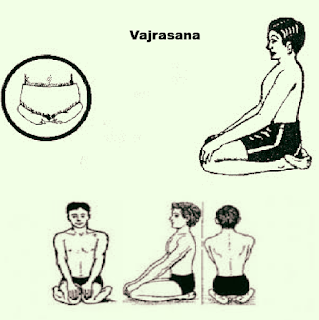
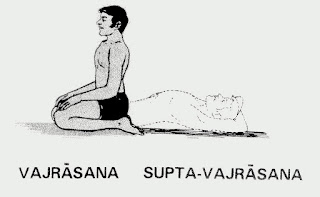









![Validate my RSS feed [Valid RSS]](https://www.feedvalidator.org/images/valid-rss-rogers.png)
